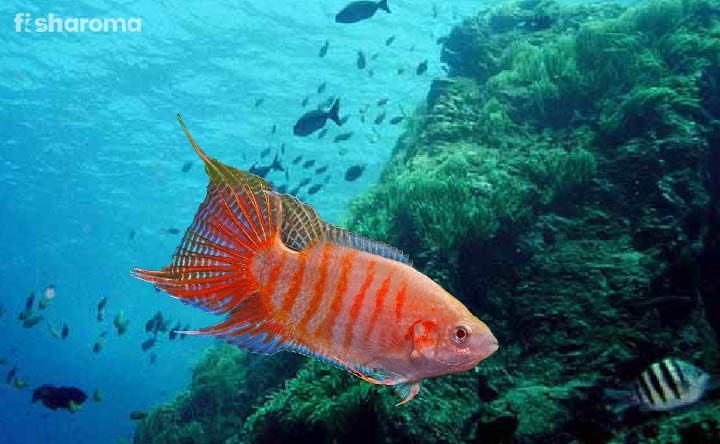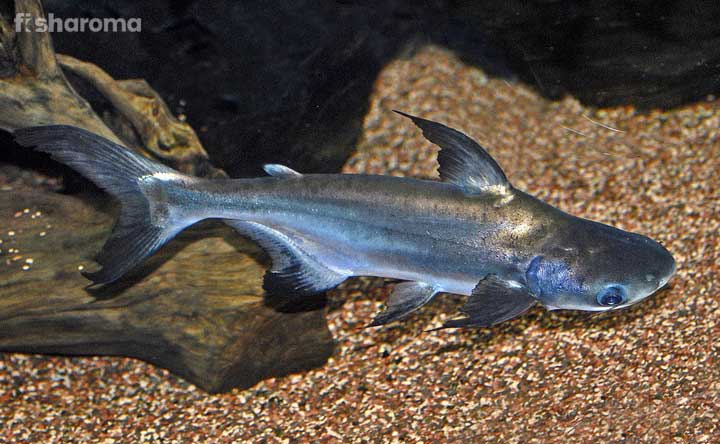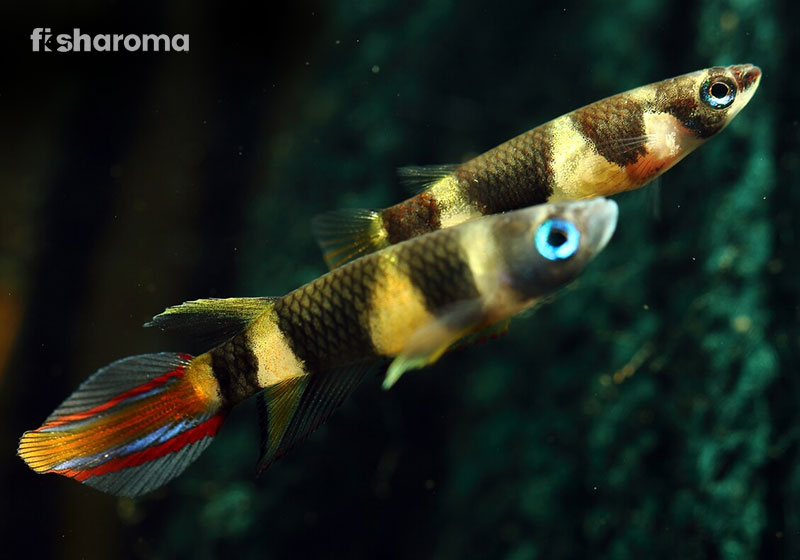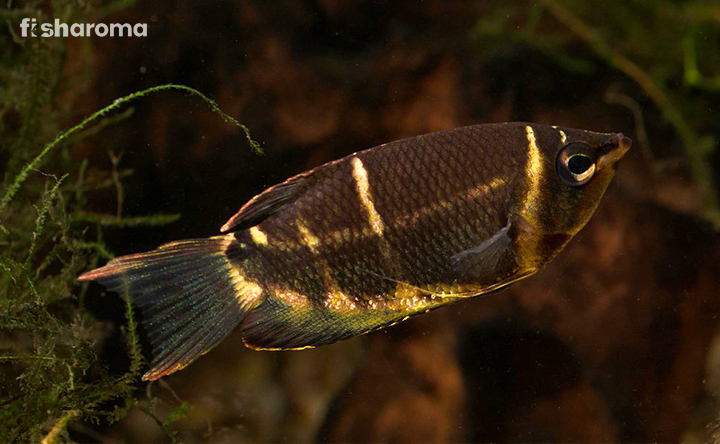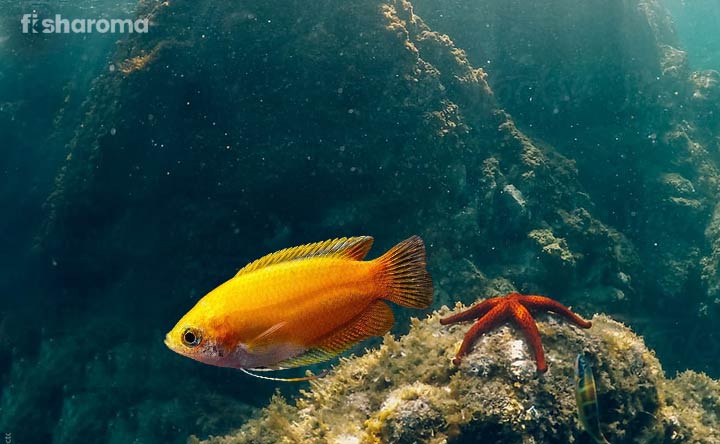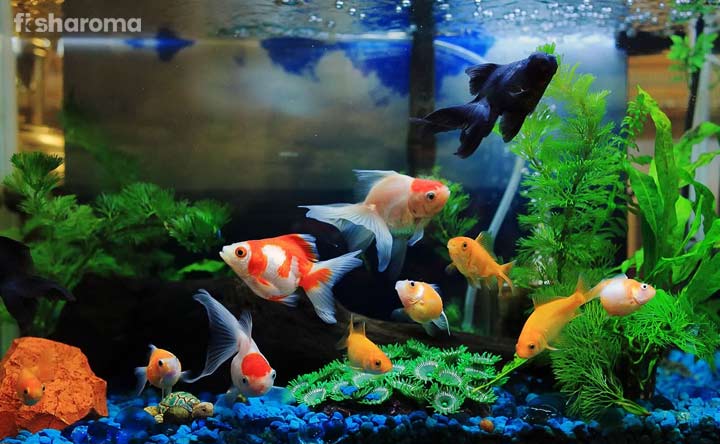Arowana – Care Guide for this Bony-Tongued Large Fish
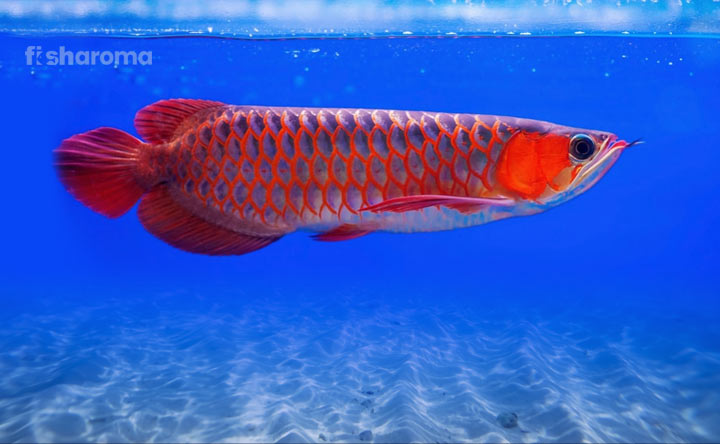
- Origin of Arowana
- Appearance of Arowana
- Types of Arowanas
- Temperament of Arowana
- Suitable Tankmates for Arowana
- Compatibility of Arowana
- Dietary Requirements for Arowana
- Habitat and Tank Requirements for Arowana
- Water Type for Arowana
- Breeding Process of Arowana
- Diseases of Arowana with Intervention
Arowana or Dragon Fish is one of the shining beauties of the South Asian rivers. Keeping a pet Arowana may give you a challenging experience because it is a large carnivore fish. It is often kept by intermediate fishkeepers because of its aggressive nature. However, most of the aquarists love the shinning colors and patterns of different fish breeds. If you are really interested to bring this fish in your home, then taking a look at its care guide may help you.
Quick Details on Arowana Fish
It is a freshwater bony fish that has an elongated body and bony tongue. This is known as ‘Monster Fish’ because of the size of the body and mouth. Before going through the detailed care guide of this fish, have a look at the key specifications mentioned in the table.
| Scientific Name | Osteoglossidae |
| Origin | South America, Australia, Asia, and Africa |
| Life-Span | 10-15 years |
| Colors | Green, Red, Silver, etc. |
| Temperament | Aggressive |
| Size | 36” (91.44 cm) |
| Diet | Carnivore/Insectivore |
| Family | Osteoglossidae |
| Compatibility | With Same Sized Breeds |
| Tank Size | 50+ gallons |
| Care Level | Intermediate |
Overview
Arowanas are not seen much in the residential tanks. They are seen in the aquariums of restaurants and aquatic museums. The common names of this fish are Monkey Fish and Dragonfish. This fish is an active swimmer, and it can survive in oxygen-deficient water. The wildlife enthusiasts often notice the hunting style of this fish. This breed also has the ability to survive without water for a long time. A rare Asian breed costs up to $150,000.
Origin of Arowana
These fish breeds are the tropical predators that are seen in near-equatorial regions, South America, Southeast Asia, Africa, Australia and Indonesia. This fish prefers living in rivers where the flow of the water is neither too strong nor too weak. You will also find this breed swimming in the river forest of Orinoco and Amazon River Basins.
It is a mid-water dweller, and the overhanging branches of the trees in the river forest act as a shade for the fish. As it is a mid-level swimmer, it can grab insects, birds, and reptiles from the surface of the water.
Appearance of Arowana
Arowanas can grow up to 36” (91.44 cm). A healthy fish can grow 2” (5.08 cm) every month, whereas some fish breeds remain small for a long period. Most of them grow fast such as Silver Arowana and Black Arowana. There are various color variations of this fish such as red, golden, green, black and silver. The large protruding and colorful barbels make the fish brighter and beautiful. The tongue of this fish is slanting and bony. The pectoral fins of the fish look like rays, and the ventral fins are small.
Types of Arowanas
This slender freshwater fish has different varieties. However, all the breeds don’t look similar to each other. They are different in color, pattern, shape, and weight. Take a look at the different types of Arowanas:
- Golden Arowana: Native to Asia, Golden Arowana is an ornamental fish found in Indonesia. The color of this breed is like a metallic golden color. There are six-row scales in the body of this fish. It has a cross-back pattern, so it shines when it swims in the tank water. In China, Golden Arowana is known as the lucky charm.
- Red Arowana: Native to the Lake Sentarum in Kalimantan, Red Arowana is a stunning red fish that has a slender shape and long tail. The fiery-red shade of this fish makes it attractive to fishkeepers.
- Silver Arowana: If you like silver-shaded fish swimming in the water, then Silver Arowana is one of the best fish breeds for your fish home. The fins of this fish look like silver jewelry. Another name of Silver Arowana is Albino Arowana.
- Jardinii Arowana: Native to the river near Australia and South-Central New Guinea, Jardinii Arowana is famous for its copper-shaded body. You will also find pink spots on the edges of the fins of this fish.
- Leichardti Arowana: This Arowana Fish is found in the East-Central Queensland in Australia. Usually, this species is found in Fitzroy River. This fish is not slender like other Arowanas.
- Black Arowana: This 35” (90 cm) Arowana is completely shiny-black shaded. It has dark-steel grey colored fins with blue stripes.
- Red-Dragon Arowana: This fish has a red body and its scales are red in color with pinkish spots. This is an active-swimmer among the other variants of Arowanas.
- Australian Arowana: The body of this fish is covered with copper-colored scales spotted with small pink edges. The height of this fish can reach up to 3 feet.
- Green Arowana: Green Arowana is found in the Nami Dam in Malaysia. It has a pale-green body and light-grey fins which is shorter in size. This South American Arowana can grow up to 3 feet.
- Yellow Tail Arowana: The body of this Arowana is lemon-green in color and its tail is yellow-shaded. This fish is also known as Banjar Fish because it is native to Banjarmasin (Indonesia).
- Red Tail Golden Arowana: This fish is found in the Siak River in Pekanbaru (Indonesia). It has a classic look in comparison to other fish breeds. It has dark-grey scales on its belly.
- Batik Arowana: Originated from Myanmar, Batik Arowana resembles Green Arowana. The distinctive scribble markings on the body of Batik Arowana make it more attractive.
- African Arowana: Originated from Africa, these fish breeds are found in Nile and Chad rivers. This fish has a downward-pointing mouth and elongated fins. The scales of this fish are dark-green shaded, and the bellies are pale-yellow in color.
- Platinum Arowana: The appearance of Platinum Arowana is like Silver Arowana. However, its color is a little bit pale than the Silver Arowana. The tail of this fish is shorter than other Arowanas.
Temperament of Arowana
Every Arowana Fish is aggressive and territorial. It is an active breed and if you keep small fish breeds with it, then it will become predators and eat up the small breeds and crustaceans. Due to its territorial nature, novice fishkeepers cannot tackle this fish. Only the intermediate aquarists can take proper care of this fish.
Don’t overcrowd the tank of this fish because it likes living alone. Too much gathering in the aquarium makes it annoyed and furious. So, it starts fighting when it gets annoyed.
Suitable Tankmates for Arowana
Most of the fish owners keep semi-aggressive Catfish with Arowanas. Don’t keep any peaceful fish or invertebrate with this fish. Try to purchase a large aquarium, and keep aggressive and semi-aggressive fish breeds with this territorial fish such as:
- Clown Loach
- Black Bended Leporinus
- Datnoids
- Black Ghost Knifefish
- Green Terror Cichlid
- Plecos
- Pacu
- Peacock Bass
- Parrot Cichlid
- Silver Dollar
Unsuitable Tankmates
Every peaceful and small fish is unsuitable for the tank of Arowana. Fin-nippers also often bully this fish, so avoid keeping fin-nippers in its tank. Moreover, don’t keep over-furious fish breeds with this fish. Some unsuitable tankmates are:
- Oscar Fish
- Molly Fish
- Neon Tetra
- Guppy Fish
- Corydoras Catfish
Compatibility of Arowana
Arowanas enjoy isolation, but if the tank is big, and it is not overcrowded, then you can keep six Arowanas in an aquarium.
Dietary Requirements for Arowana
Arowanas are carnivores, which prey small fish and insects in the wild. You can feed healthy foods to this species in captivity that helps them enhance their color and increase their strength. Some quality foods that you can feed to the fish are:
- Prawn
- Shellfish
- Shrimp
- Beef Heart
- Dead Fish Slice
- Bloodworms
You can feed readymade foods also to this territorial fish such as:
Arowanas are extremely fast fish from the juvenile period, so they grow faster. So, they always need a lot of energy and food. You should feed a small this fish twice a day. Along with the metabolism, the growth rate of an This breed slows down with the growing age. So, try to feed them thrice a day in a small quantities.
Habitat and Tank Requirements for Arowana
Are you ready to set the den of a dragon? Yes, Arowana is like a dragon because of its temperament and size. So, a spacious aquarium is required for this fish, as it lives in the mid surface of the large rivers. There are some factors that are needed to be followed for setting a tank for this fish.
Tank Size
For this 36” (91.44 cm) large fish, you need a spacious 50-120 gallons aquarium.
Ornaments
This fish is a freshwater fish, and it prefers living in a tank that is ornamented with freshwater green plants. You can also keep some gravels, fine sand, and small caves at the bottom of the tank to decorate the fish home. Avoid keeping sharp decorations in the tank of this fish which can harm or injure them, as they are the fast-moving fish.
Filter
You can purchase sponge filters, trickle filters, sump filter and canister filter for the fish tank of Arowana to flush out the waste elements from the aquarium.
Lighting
Arowana is a nocturnal fish, so you don’t need a harsh light for the aquarium of this fish. A medium LED energy-saving light is enough for the aquarium. You can keep the lights switched on for an hour a day to improve the color of this fish breed.
Water Type for Arowana
Arowanas are not much picky about the water parameter. However, if you follow a specific range of water temperature or parameter, then the health of your pet fish will remain controlled. Look at a few factors for maintaining the water parameter for this fish.
Substrate
There are various types of substrates which you can keep in the fish tank, but sandy gravels and small rocks are the perfect choices that you can keep in the aquarium of Arowana.
Temperature
The temperature for the water should be 86° F (30° C).
pH Level
The pH level of the water should be 6.0-7.0.
Hardness
A little bit of soft acid should be present in the tank water of this fish.
Cleaning Method
Use a soft brush and liquid soap to clean the fish tank. Once the scrubbing and washing process is complete, wipe the water droplets from the walls and the decoration of the aquarium.
Replacement Procedure
You can replace about 10-15% of the water once a week from the tank of Arowana. If you are changing the water in a month, then it will be better to change 25% of the water from the tank of Arowana. Always remember to check the water parameter of the fresh batch of water before putting it in the aquarium.
Breeding Process of Arowana
Arowanas rarely lay eggs in captivity. They need a large space for mating. So, it is necessary to keep Arowanas in a separate tank during the breeding season. When the female fish lays eggs, the male mouth-brooder fish carries them in its mouth. The eggs of the fish are bright-orange shaded.
This fish usually lays eggs in rainy season in flooded rivers, so you can keep comparatively cool water in the breeding tank during the season of breeding. Once being fertilized by the males, the eggs hatch within the next five weeks.
Diseases of Arowana with Intervention
While keeping a pet fish in your aquarium, it is your responsibility to look after its health. So, always try to provide proper food and nutrition to control the health issues of this fish. Take a look at some common diseases:
- Drop Eye
- Itch
- Bacterial Infection in Scales
- Ulcer
If you want to prevent these diseases, maintain the quality of the water in the fish tank by maintaining a strong filtration system. Also, see that your pet fish are happy because some diseases are caused due to stress. Don’t keep unsuitable tankmates with this fish because they can be the reason of stress. Moreover, feed them timely, and provide proper nutrition.
If you are an intermediate aquarist, then keeping this fish in your tank is not difficult. But if you are a novice aquarist, then go through the care guide of this fish for petting the fish properly.
Interesting Facts
- This fish can survive twenty years in captivity if they are properly nourished.
- According to Chinese tradition, this fish is the symbol of luck.
- In the book, ‘The Dragon Behind the Glass’ by Emily Voigt, this fish is described as the world’s most coveted fish.
- This fish is facultative air breather that obtain oxygen by sucking the air to its swim bladder.
- The red pigmentation of this breed enhances if they are feeding on exoskeleton or shell of prawns and shrimps.
- This fish is known as Monkey Fish because of its hunting and leaping ability.
- Aquarists call this fish Dragon Fish because of the frightening barbells which protrude from the lips of this fish.
Know About the Care Guide of Other Aggressive Fish and Arowanas
Not only one but there are various aggressive fish that are often cared for by experienced fishkeepers. If you are a new fish enthusiast, then go through the care guides of these fish breeds:
- Flowerhorn Cichlid: The beautiful flowery shape of this fish makes it one of the most beautiful species for aquarium. But most of the experienced fishkeepers keep this fish in its aquarium. Its complete care guide will help the beginners also to take care of this fish.
- Silver Arowana: There are various types of Arowanas, and among them, Silver Arowana attracts the charm of the aquarists with its beautiful color and pattern. It is also an aggressive fish, but you can take care of it if you go through the care guide of the fish.

